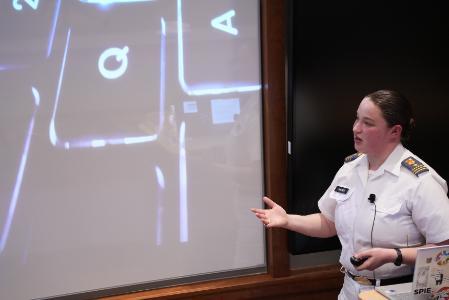- Dr. Donald McCabe’s study highlights rampant academic dishonesty among college students, motivating Abigail Basener’s research.
- Basener develops a predictive model to discern between human and AI-generated texts, focusing on 21 distinct features.
- Basener’s model successfully identifies linguistic nuances, distinguishing between human and AI-generated content.
- Basener’s research sheds light on the intricate dynamics of automated content generation and its implications for education.
Main AI News:
In the realm of academia, combating academic dishonesty is a perpetual challenge. Dr. Donald McCabe, a distinguished figure from Rutgers Business School, conducted a comprehensive study involving 1,800 college students. His findings revealed alarming statistics: 15% of students submitted counterfeit term papers, 84% engaged in some form of cheating on written assignments, and 52% resorted to plagiarism. This rampant dishonesty not only undermines the integrity of education but also places an additional burden on educators, who must painstakingly verify the authenticity of each submitted paper.
To address this pressing issue, Abigail Basener, a Virginia Military Institute cadet specializing in applied mathematics, embarked on a pioneering endeavor. Her groundbreaking honors thesis, titled “Distinguishing AI-Generated Writing from Authentic Student Work,” delved into the development of a predictive model capable of discerning between human and machine-generated texts.
Basener’s research objectives were multifaceted. Firstly, she aimed to construct a robust model for identifying computer-generated writing, particularly those produced by Large Language Models (LLMs). These sophisticated algorithms, such as ChatGPT, mimic human language patterns by analyzing vast datasets, albeit without genuine comprehension. Secondly, Basener sought to elucidate the underlying mechanisms of LLMs, providing valuable insights into their operation. Lastly, she endeavored to equip users with a nuanced understanding of LLMs’ capabilities and limitations, empowering them to navigate the landscape of automated content generation effectively.
In her quest to devise an effective detection mechanism, Basener meticulously curated a set of 21 distinct features akin to conversational cues to characterize textual inputs. Drawing an analogy to identifying fruits based on attributes like shape, color, and size, Basener highlighted the significance of parameters such as sentence and paragraph structure, word usage, and punctuation patterns in discerning authentic human writing from AI-generated content.
Validation of Basener’s model relied on a comprehensive dataset comprising 2,000 entries, evenly split between human-authored and AI-generated texts. Through rigorous analysis, Basener unearthed notable distinctions between the two categories. Human writing exhibited a propensity for emotional depth and structural diversity, reflected in varied sentence lengths and nuanced language usage. Conversely, AI-generated content demonstrated a preference for medium-length sentences, distinct word choices, and a predilection for formal language conventions.
The efficacy of Basener’s model was demonstrated through practical experimentation, wherein her algorithm accurately identified human-generated texts while discerning AI-generated counterparts. Notably, Basener’s model detected subtle linguistic nuances, distinguishing between colloquialisms and formal language usage, thereby showcasing its prowess in identifying artificially generated content.
Basener’s pioneering research not only yields a potent tool for combating academic dishonesty but also enriches our understanding of artificial intelligence’s role in text generation. As Col. John David, her project advisor, aptly remarked, “Basener’s endeavor represents a pivotal milestone in the realm of detection methodologies, shedding light on the intricate interplay between human creativity and AI-generated content.” Indeed, her exemplary work stands as a testament to the transformative potential of interdisciplinary research in shaping the future of education and technology.
Conclusion:
Basener’s innovative approach to detecting AI-generated texts marks a significant advancement in combating academic dishonesty. Her model not only provides educators with a powerful tool but also underscores the evolving landscape of automated content generation. As organizations seek to safeguard the integrity of academic institutions and digital platforms, Basener’s research paves the way for enhanced detection methodologies and informed decision-making in the market for educational technologies and content verification solutions.

